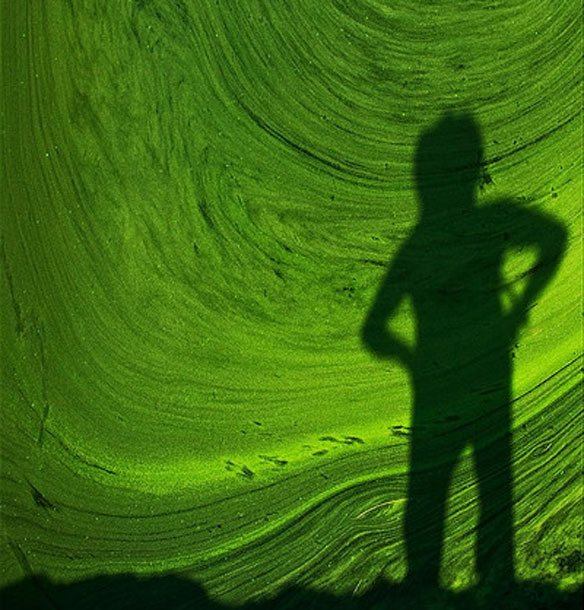
Photo source: ©© Flickrohit
WATCH A BBC Video: Toxic algae turns Brittany’s beaches green
Workers have been trying to clear tonnes of toxic seaweed which have accumulated on beaches in Brittany in France.
Un an de lutte contre les algues vertes n’a pas fait reculer le fléau
By Angela Bolis, Le Monde
Translation: One Year On … Green Algae Are More Than Ever Plaguing Brittany’s Beaches
One year after the French Government launched the ‘Plan National de Lutte Contre les Algues Vertes’ (National plan against Green Algae), toxic seaweed which have accumulated on beaches in Brittany, is still causing great problems along the country’s coastlines.
All summer long, there have been constant and costly efforts to remove tons of toxic algae from beaches, but no sooner than the seaweed is removed, more grows.
Recently, 36 wild boars have been discovered dead on the shores of Brittany. Autopsies revealed that they had died from the resulting gases released from the decomposing plants.
As well as being hazardous to health – causing the death of a horse last year and wild boars’ this year- the problem has had a negative impact on tourism as well.
The algae first made its appearance on Brittany’s coastline, about 4 decades ago but it is only recently that official bodies have begun to really tackle the problem.
The latest governmental effort ” Le Plan National de Lutte Contre les Algues Vertes’ (National plan against Green Algae), was launched last year and focuses on 8 bays surrounded by 3500 farms.
109 sites in Brittany are badly affected with daily cleanups sometimes taking away as much as 70,000 cubed metres of algae per year. Some of this is used as fertiliser.
Besides costly clean-ups, the Plan aims to bring preventative solutions to the green tides problem plaguing Brittany’s beaches.
The cause of the scourge is easily identifiable. Fertilisers from local farms run-off into water-systems saturating the water with nitrates causing algae blooms. The Plan aims to reduce such toxic run-offs’ discharge in the 8 bays, by up to 40 percent, which still appears quite “unrealistic and basically unnecessary”, said Alain Menesguen, IFREMER scientist, “…unless nitrates’ levels in rivers and run-offs are indeed reduced below 15mlg/liter in concentration.”
Many but not all, local farms around the 8 concerned bays, have agreed to various measures to reduce this runoff, including turning 60% of land back to grassland and not using fertilisers. As yet though, success has not been achieved.
The scope of the problem becomes quite clear “it is a whole new approach of agriculture that needs to be rethought” said scientist Jean-Paul Guyomarc’h, (conseiller scientifique à l’association Eau et rivières de Bretagne)… and it will not happen overnight…
Wave Of Toxic Green Beaches, France, By Sharlene Pilkey
With beaches and coastlines all over the world already under attack from sea level rise, pollution, mining, driving, seawall construction and human development encroachment, another menace is mounting an assault. Humans are behind this one too…









